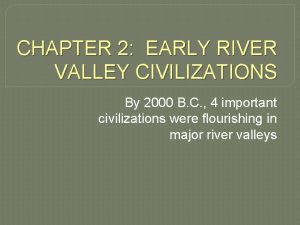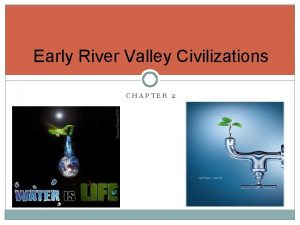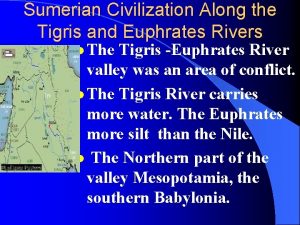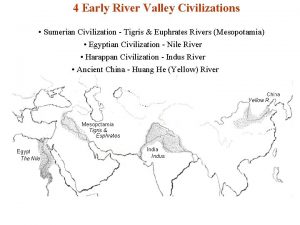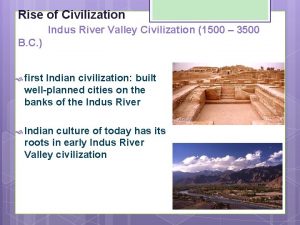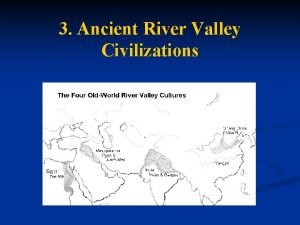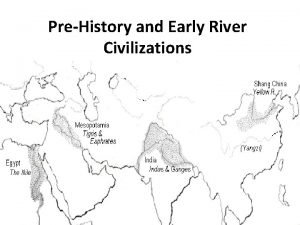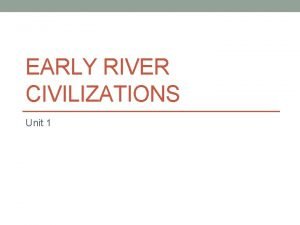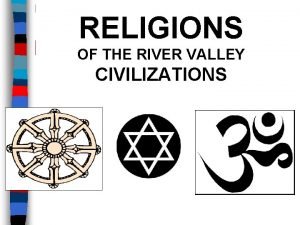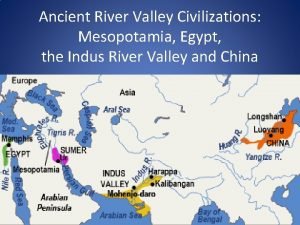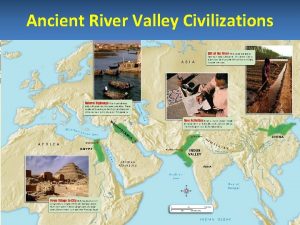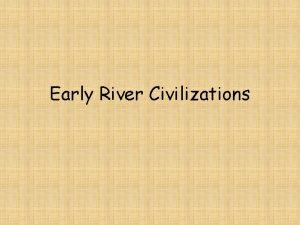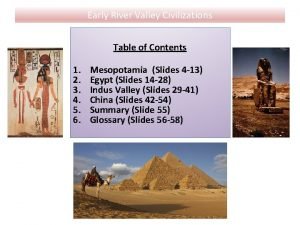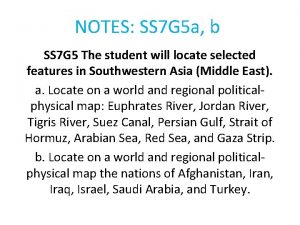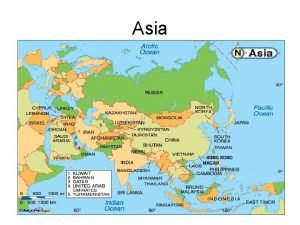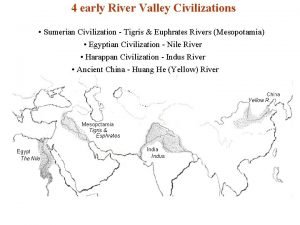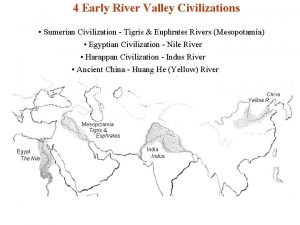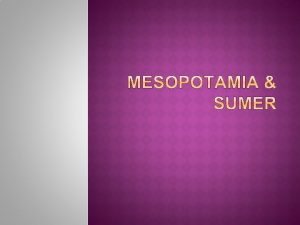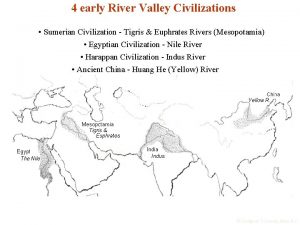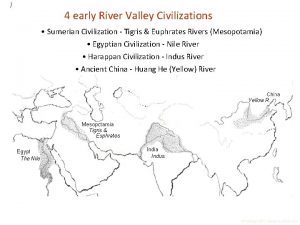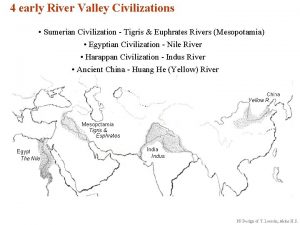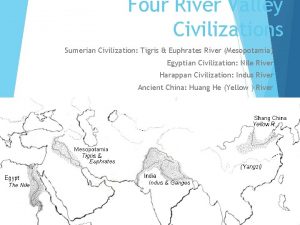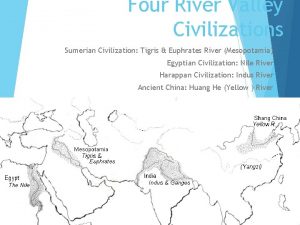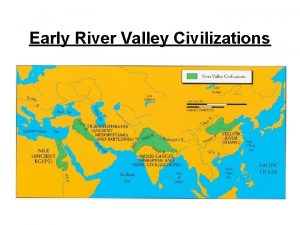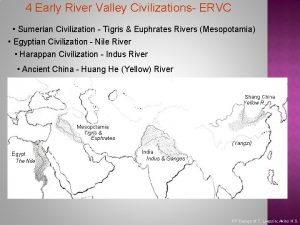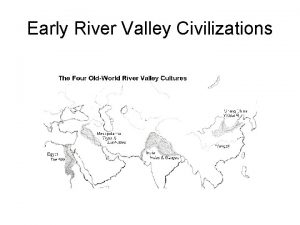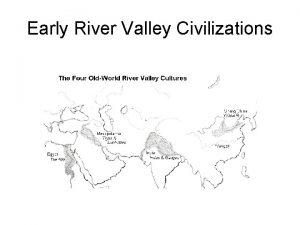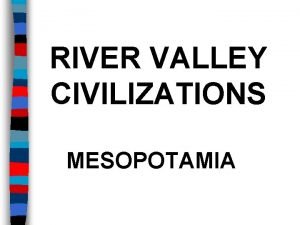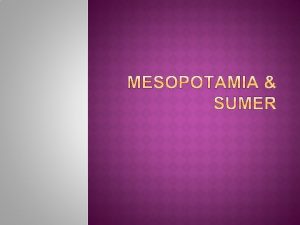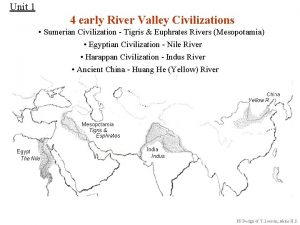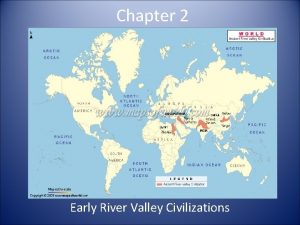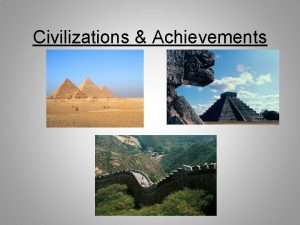4 early River Valley Civilizations Sumerian Civilization Tigris



![II. Organized Government A. The Pharaoh [means, royal house] – the ruler of Egypt II. Organized Government A. The Pharaoh [means, royal house] – the ruler of Egypt](https://slidetodoc.com/presentation_image_h2/2f3ed255cbc6d809981be5553a62877c/image-4.jpg)
















- Slides: 20

4 early River Valley Civilizations • Sumerian Civilization - Tigris & Euphrates Rivers (Mesopotamia) • Egyptian Civilization - Nile River • Harappan Civilization - Indus River • Ancient China - Huang He (Yellow) River PP Design of T. Loessin; Akins H. S.

I. Geography A. Nile River split Lower Egypt & Upper Egypt Is lower Egypt at northern part or southern part of the Nile River?

B. Environment 1. Nile had predictable floods 2. Deserts on both sides of Nile 3. Cataracts effected travel Egypt would develop mostly in isolation and therefore, developed a culture that was quite unique.
![II Organized Government A The Pharaoh means royal house the ruler of Egypt II. Organized Government A. The Pharaoh [means, royal house] – the ruler of Egypt](https://slidetodoc.com/presentation_image_h2/2f3ed255cbc6d809981be5553a62877c/image-4.jpg)
II. Organized Government A. The Pharaoh [means, royal house] – the ruler of Egypt 1. were considered gods 2. served both political and religious roles 3. power rested in the ability to predict the floods The pharaoh Akenaton and his wife-sister Nefertiti worshiping the sun god, Ra.

B. Bureaucracy set up during the Old Kingdom (vizier) C. Old Kingdom (2700 BCE – 2200 BCE) Middle Kingdom (2055 BCE – 1650 BCE) New Kingdom (1550 BCE – 1070 BCE) were Egyptian dynasties OLD KINGDOM - 2660 -2180 BCE • The Great Pyramids are built at Giza. • Pyramids are built at Abusir. MIDDLE KINGDOM 2180 -1550 BCE • Fragmentation of centralized power. • Kings in Thebes establish control over all Egypt. • Invasion by Hyksos, an Asiatic people in the Nile Delta. • Upper Egypt dominated by kings in Thebes. NEW KINGDOM 1550 -1070 BCE – GREATEST SIZE • Ahmose expels the Hyksos and reunites Egypt. • Reigns of such kings as Amenhotep and Thutmose • Ramses II (1290 - 1224 BC) divides power in Middle East with the Hittites; Qantir capital of Egypt. • Invasions of mysterious sea peoples wreck havoc throughout

III. Cities A. No independent City-States B. 42 Provinces run by Governors

IV. Organized Religion A. Polytheistic B. Belief in afterlife C. Pharaohs were gods were ruled even after death – tombs/pyramids Below: The pantheon of Egyptian gods* Example of Religious Syncretism Right: The depiction of the seated mother holding the suckling child Horus was a common painted image throughout Egypt and is reminiscent of the iconography of Mary and Jesus. Also, Horus, being the child of Osiris and Isis – the god of the living and the dead - would grow up to defeat the evil Seth and cast him into darkness. Seth eternally strives for revenge, battling Horus at every turn. When Horus wins, Maat (justice) is upheld and the world is at peace. Horus then protects us in this life. Given all that…can you see how the early Christians had an easy time marketing their new Roman religion to the Egyptians, particularly after convincing them that Mary, mother of Jesus, was an incarnation of Isis!

The Funerary Scene This scene depicts what occurs after a person has died, according to the ancient Egyptians. The Egyptians had an elaborate and complex belief in the afterlife.

Osiris would weigh each person’s heart on a scale against the weight of a feather. If the heart tipped the scale, heavy with sin, the Devourer of Souls would pounce on the heart. If not, the soul would live forever in the Other World.

Desiring to make it to the Other World safely, Egyptians of all classes made special preparations for their burials, including mummification – embalming and preserving the corpse to prevent it from decaying. Above: Canopic jars for the body’s various organs. Right: Coffin of a Middle Kingdom government official.

The mummy of Ramses II (1304 -1237 BC ) still preserved today, 3, 200 years later, at the Cairo Museum.

Annubis, god of embalming

Young males educated as scribes paint the walls of a tomb in preparation for a burial.

V. Class Structure/Social Stratification A. Royal Family B. Upper class • Landowners • Priests • Army commanders • Government officials Wealthy man’s house at Amarna. Royal barge of Ptolemy IV moored at Memphis. Bas-relief of servants attending a royal lady.

C. Middle Class • merchants / artisans D. Lower class • peasant farmers, unskilled laborers E. Socially Mobile classes: Not “locked in”, lower and middle classes could rise up through marriage or through merit (success). A. Harvesting grain; B. Musicians play for the workers in the fields; C. Women winnowing the grain; D. Scribes tally the farmer’s taxes; E. The farmer’s son tending the livestock / cattle.

F. Women had many of the same rights as men, could own property, could seek divorce. Did you know… Men and women wore makeup in Egypt. The dark-lined eyes that look out at us from the artwork of ancient Egypt was the height of fashion and was called kohl – powdered minerals mixed with water and applied with a small stick. Both genders also wore lipstick – crushed red ocher (iron oxide) mixed with oil.

VI. Writing A. Pictographs developed into hieroglyphics B. Written on Papyrus, unfurled reed from the Nile, dried into strips C. Deciphering hieroglyphics – The Rosetta Stone Why was the knowledge of reading hieroglyphics LOST in the first place? In the first century A. D. when Christianity arrived in Egypt, it was common for the Christian movement to remove / destroy the religious images, writings, and priesthood of the former religion in the region. During this chaotic time of transition, the literate priests and scribes were mostly killed off and the knowledge of hieroglyphics was lost for almost 1, 500 years.

The Rosetta Stone, discovered in 1799 A. D. The Rosetta Stone can be viewed by tourists today in the British Museum.

VII. Art/Architecture (Technology, too!) A. Geometry, numeric system on base 10 (decimal) Calendar B. Engineers and Architects - first to use stone columns C. Tomb artifacts

VIII. Decline of the Kingdoms A. Old Kingdom 1. Weak Rulers & division in the Kingdom 2. Middle Kingdom rises – begins building projects in Thebes – No $ spent on defense B. Middle Kingdom 1. Invaded by the Hyksos - rule Egypt for 70 years. 2. Ahmose restores Egyptian power C. New Kingdom 1. Expansion of Egyptian civilization Thebes N I L EGYP T R.
 Chapter 2 early river valley civilizations
Chapter 2 early river valley civilizations Chapter 2 early river valley civilizations
Chapter 2 early river valley civilizations Indus valley civilization education
Indus valley civilization education River in sumerian
River in sumerian Indus river valley job specialization
Indus river valley job specialization 4 river valley civilizations
4 river valley civilizations Indus river valley timeline
Indus river valley timeline River valley civilizations map
River valley civilizations map Ancient chinese civilization
Ancient chinese civilization River valley civilizations map
River valley civilizations map 4 river valley civilizations
4 river valley civilizations Which cultures believe in reincarnation
Which cultures believe in reincarnation River valley civilizations vocabulary
River valley civilizations vocabulary 4 river valley civilizations
4 river valley civilizations Ancient river valley civilizations powerpoint
Ancient river valley civilizations powerpoint Longest river in the world
Longest river in the world The huang valley
The huang valley Mesopotamia technology
Mesopotamia technology Tigris river map
Tigris river map 童慶斌
童慶斌 Tigris and euphrates river
Tigris and euphrates river
